Teaching High and Low Sounds – A Kindergarten Music Assessment
Teaching high and low sounds is fun for kindergarten students and the assessment is naturally integrated into music class activities.
Some of the links on our site are affiliate links. If you click on a link and make a purchase, we may earn a small commission.
Lessons to teach high and low sounds are some of my favorite early elementary and kindergarten music lessons. However, it’s not as straightforward as it may seem. Kids often confuse high and low with loud and soft. And you need a reliable way to assess learning.
In all grade levels, especially kindergarten, it’s important to seamlessly integrate music assessments into music class activities. Assessments should be fun learning experiences.
Read on for fun ways to teach and assess high and low sounds.

What’s in this post? Click to open the Table of Contents
Spatial Relationships to Teach High and Low
I like to introduce high and low sounds with drag-and-drop sorting activities on the whiteboard. Don’t take for granted that early elementary students know the meaning of high and low in terms of spatial relationships. This is an important step in building the foundation. A simple sorting activity paired with singing the “high” or “low” answer provides a good foundation for learning the concept.
Don’t have access to a whiteboard? Consider using toys or other visual prompts. If you can’t find the toys you want in your stash, print off pictures of items to classify as high or low.
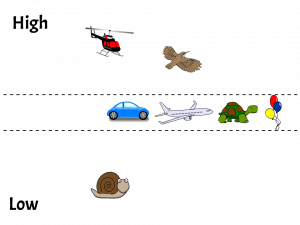
Animal Sounds to Teach High Low
I use a similar drag-and-drop sorting activity to introduce high-low animal sounds. I always make the sound as students place the animals. This gives children a reference point as they imitate my sound.
Instead of a digital activity, consider using stuffed animals or pictures of animals as visual cues. Or, even simpler, use sign language for each animal. Have students place their signs high or low as they make the corresponding sounds.
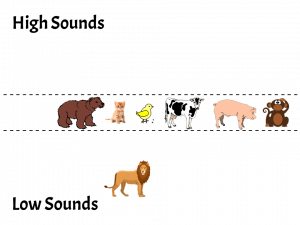
Vocalizations – Teaching High and Low with Flashlights
Kids love flashlights and Halloween is a fun time to integrate “ghost voice” vocalizations and flashlights.
- Dim the classroom lights or turn them off.
- Shine a flashlight on a wall where all students can see.
- Move the light slowly up and down as students sing “oo” using their spooky voices and follow the melodic contour of the light.
Vary your patterns. And, make sure to hold a steady pitch moving straight across the wall too. This helps to teach students to really follow the pitch and not simply bounce between high and low. You can even create staccato patterns by turning the flashlight on and off.
Add Scarves and Movement
Use scarves and have students mirror your movements as they follow or echo your vocal patterns. This is another fun way to practice vocalizations all year long.
Make learning fun!
Use Storybooks to Teach High and Low
There are several good storybooks to teach high-low. My favorite is Up, Up, Down by Robert Munsch. (There is a YouTube video of the author reading, but he does not follow the words with the pitch and inflection of his voice.)
As you read, accentuate the pitches moving your voice upward more each time you say “up, up, up, up” and moving your voice downward each time you say “down, down, down.” Use your free hand to trace the high and low contours in the air.
Students should automatically begin to join in on the repetitive sections. If they don’t, prompt them to join you and help tell the story.
I always read this book at least twice. The kids LOVE it and it is such a fun way to reinforce the concept of high and low pitches.
Last update on 2024-04-27 / Affiliate links / Images from Amazon Product Advertising API
Drawing Assessment Idea
Consider having students draw a picture of animals that make high-pitched sounds and animals that make low-pitched sounds. Instruct students to fold their paper in half to create a high section and a low section. They should draw the high-pitched animals on the top of their paper and animals that make low-pitched sounds on the bottom half of the page.
Movement Activities to Assess High-Low
After students have had many opportunities to practice high-low in different ways, it’s time to assess. Try this fun movement activity I call “Tortoises & Ballet Dancers.”
Play simple melodic patterns using only the black notes of the piano (pentatonic scale). When you play low, students should crawl low like a tortoise. When you play high, students should move on their tiptoes with hands over their heads.
The first time you play this game, do it just for fun and just for practice. I never grade this activity as an assessment the first time. Even when I am recording grades, the activity feels no different for students. To them, it’s still just a fun game. See the activity in the video below.
These sweet kindergarten students loved learning and I enjoyed teaching them high-low concepts. Music assessment and learning should be fun and authentic.
Enjoy these cute Tortoises and Ballet Dancers!

More Early Elementary Favorites
When your early elementary and kindergarten students are ready, these have been some of our favorite rhythm reading activities. I have also used these for student-led conferences. Parents are always impressed when they see their children reading music using icons and standard notation. Each of these lessons includes Take it Home Pages to share at home.
More About Take Home Pages and Assessment
Take Home Pages are perfect assessment activities. They also build support for your music program by building music literacy skills and sharing those skills at home. Click to see this post for more on using Take Home Pages as Elementary Music Assessments with all grade levels.
More About Developing Music Skills in the Elementary Grades
- Guided Music Reading in the Early Elementary Grades
- Instruments of the Orchestra and Band – A Virtual Field Trip to the Symphony
- Teaching Improvisation in the Elementary Music Classroom
Featured Storybook
- Munsch, Robert (Author)
- English (Publication Language)
- 32 Pages – 03/07/2023 (Publication Date) – Scholastic Canada (Publisher)
Last update on 2024-04-27 / Affiliate links / Images from Amazon Product Advertising API
Meet the Author
Terri Lloyd is a former elementary music teacher with over 25 years of experience. She holds a Bachelor of Music, a Master of Science in Education, and a Technology Certificate in Instructional Design.
She is currently active in music education through blogging, workshops, and curriculum development. She serves on the music staff at her church and volunteers for an after-school children’s program. Terri is an active musician in the community, performing in a local Big Band, pit orchestras, and various events.
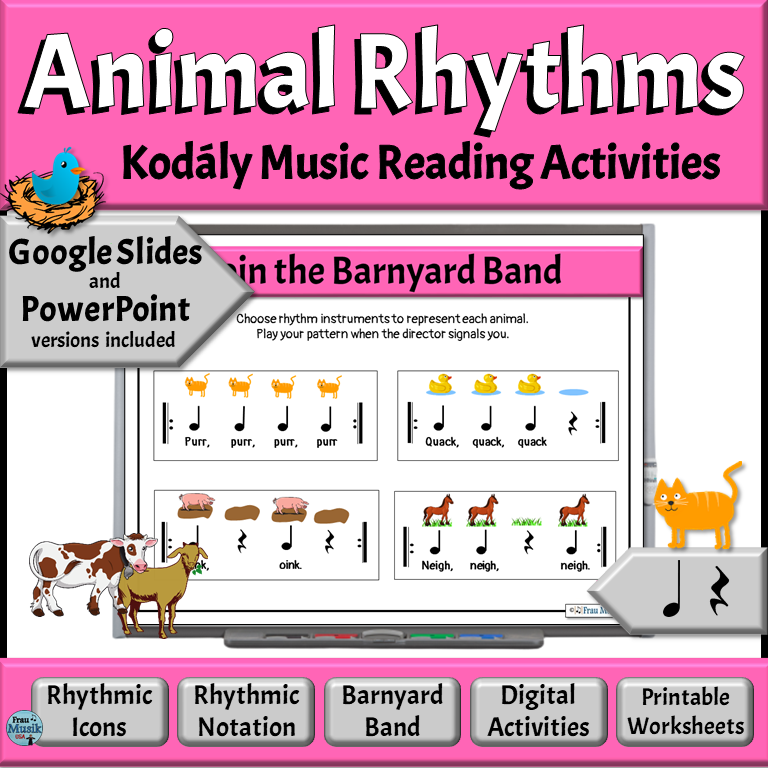
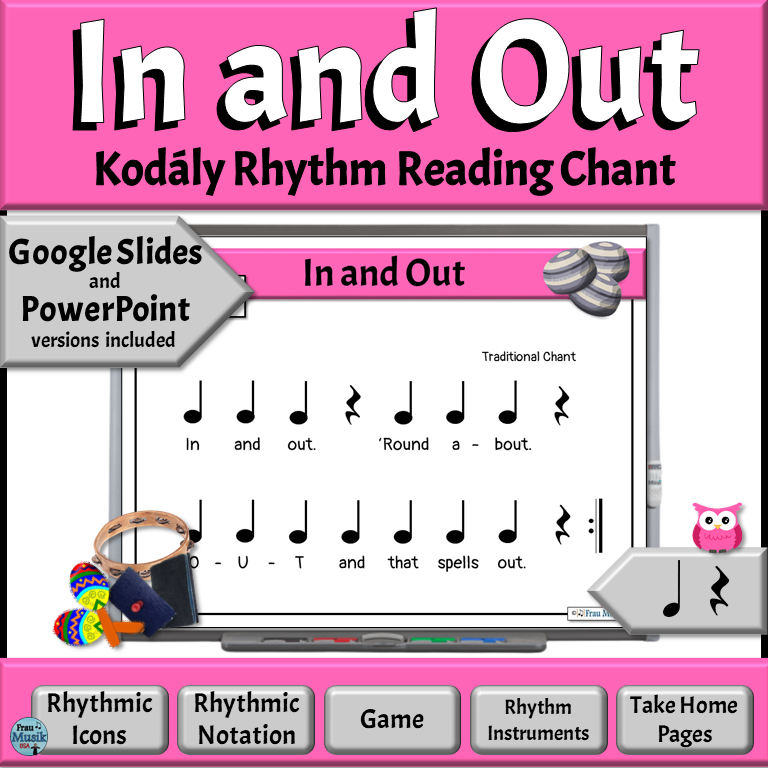
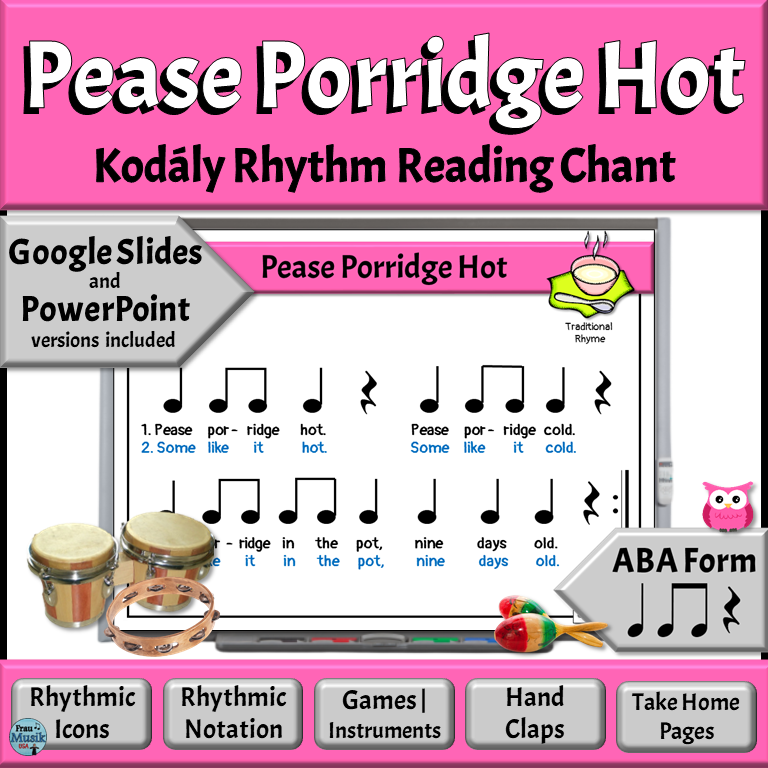
Could you list the books that you would recommend to teach high and low?
Hi Claudine,
My favorite book for teaching high/low is “Up, Up, Down” by Robert Munsch.
I also use “Goldibocks and the Three Bears” using a low voice for Papa Bear, a mid-pitched voice for Mama Bear, and a high-pitched voice for Baby Bear. I pair this with visuals using stuffed animals. I hold the bears low/middle/high when each speak. The second time you do this activity, you can ask students to hold the bears and have all of the students say “someone’s been eating my porridge” in the correct voicing.
The storybook “Up, down and Around” By Katherine Ayres is about plants growing in the garden. As you read “_____ grows up” make your voice go up. As you read “_____ grows down” make your voice go down. This is good for melodic direction too.
Another useful book is “Fast-Slow High-Low” by Peter Spier.
Best wishes!
Terri
What was the melody that was being played in the video 🙂 ?
Hi Celia, I was just improvising on the black keys of the piano. It is very easy to do without creating any dissonances I watch the kids and try to mix up the high/low sections. I like this activity because the kids really learn to listen first, then identify the high/low sounds.
A little later in the year we repeat this activity adding mid-range or “middle” pitches. For the mid-range pitches, we walk with hands on their hips.